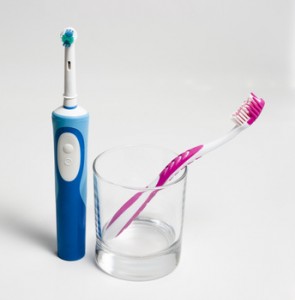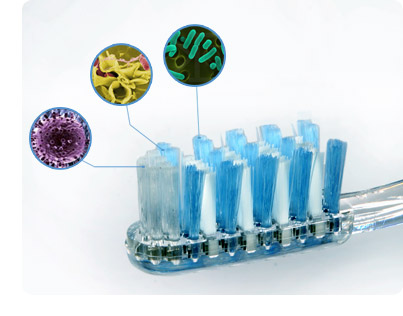How often should you change your toothbrush
Some people can use their toothbrush repeatedly until they misplace it. The average American only change their brushes 1.9 times a year. The American Dental Association recommends that you change your toothbrush at least four times a year, approximately 3 months and every time you are sick. If the bristles of your toothbrush start flaring before three to four months, then you are using too much pressure to brush your teeth. Dentist believes toothbrushes should be thrown out after roughly 40 to 50 uses. Healthy people should change brushes every two weeks. People with gum problems, other oral diseases, or weakened immune systems should change toothbrush more often. People with a respiratory illness or other infectious disease should change their brushes at the beginning of the illness, again when they first feel better, and once again when they are well. Toothbrush replacement should also be practiced every day for patients who are recovering from major surgery because susceptibility to infections is higher at that time.
The easiest way to know when to change your brushes nowadays is to look at the indicators on the toothbrush. Usually the indicators consist of two or three rows of bristles which are blue in color, when the blue color fades; it is time to change a new toothbrush.
Are toothbrush indicators correct or just marketing techniques
Toothbrush indicators are there to tell you when to change your toothbrush. Nearly all manual toothbrushes now have indicators. How does the indicator work? The actual process is extremely simple. A non-toxic dye is embedded into the outer layers of the bristles making it a different color from the other bristles. The usual color opted here is blue. As you keep brushing your teeth, the blue color indicator bristles on the brush gets thinner and the color present in outer layer of the bristles starts diminishing. Once the color has worn off, your brush indicators indicate to you that it is time to change a new one.
Even electric toothbrushes are now coming with brush indicators so that people know when it is time to change the brush head. Usually the toothbrush replacement indicators in electric toothbrushes work on the number of oscillations. Once the total number of oscillations reaches a pre-selected number, a signal is produced and this signal is fed to an alarm indicator in the form of a light. Once this light comes one, the user becomes aware that it is time to change the toothbrush head.
Those toothbrush indicators are correct and accurate. It is not just a marketing ploy by the oral company. It was actually design to make your life easier and to ensure better oral health for everyone. How it helps to better the health of your mouth is explained next.
What are the benefits of changing toothbrush
- When you change your toothbrush to a new one , the new toothbrush removes up to 30 percent more plaque than one that’s 3 months old. The effect of long term use toothbrushes are that the bristles fray and wear out, leading to ineffective brushing and finally tooth decay.
- Another reason to change a new toothbrush is so that your gums are not injured . A worn brush can damage gum tissue because of the frayed bristles traumatically rubbing against the gums.
- Researchers have established that thousands of microbes can grow on the brush bristles and handles. These microorganisms can cause cold and flu viruses, the herpes virus that causes cold sores, staphylococcus bacteria responsible for many ear, nose and throat infections and the Candida microbe that causes thrush. Â That being said, toothbrush bristles wear down and become breeding grounds for bacteria.
Protecting toothbrushes from germs and bacteria
- Don’t keep your brush in the bathroom. Bathrooms are wet and moist which is the perfect breeding ground for bacteria.
- Store the brush somewhere dry, perhaps the bedroom, or an open area and not a tightly closed medicine cabinet.
- Don’t store brushes together. This is a great way to cross-contaminate the entire family.
- Use a brush made from clear or light-colored translucent plastic because light passing through helps to prevent the growth of microbes.
- Do not use hot water to rinse the brush. It will shorten the life of the brush.
 Is there any difference between electric and regular toothbrush
Is there any difference between electric and regular toothbrush
Of course there is. For starters, most people change regular brushes to an electric ones because it is obviously more convenient. However, an electric toothbrush is more expensive than a regular toothbrush.
There is a difference in the way they work. An electric brush runs on an automated motor and it oscillates in a certain rotary and vibratory direction. Therefore an electric brush is very useful for those who have a difficulty following manual effective brushing methods. For those who can manage brushing methods effectively themselves, a manual or regular brush is recommended.

